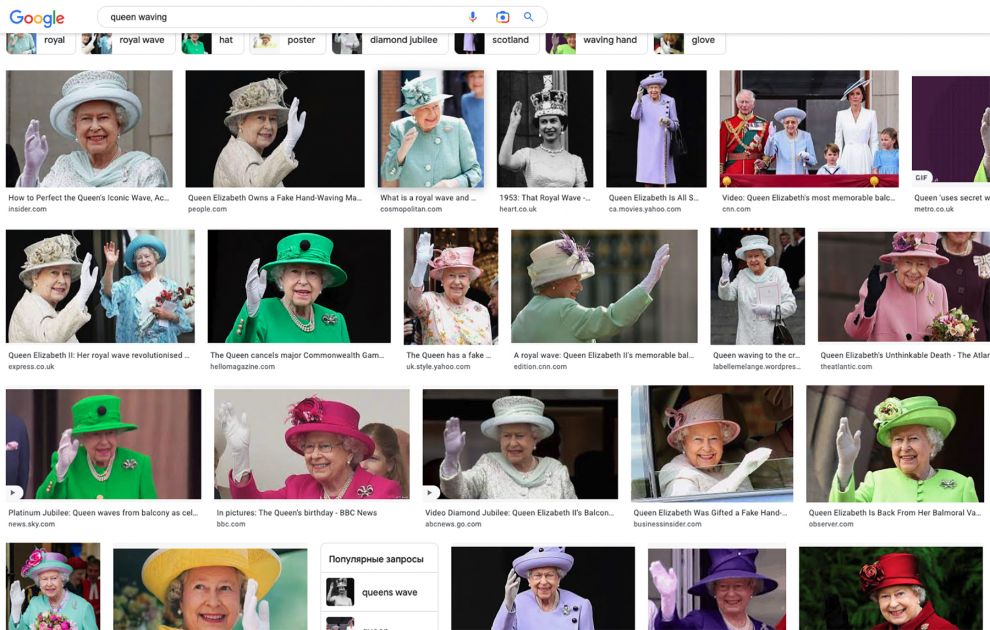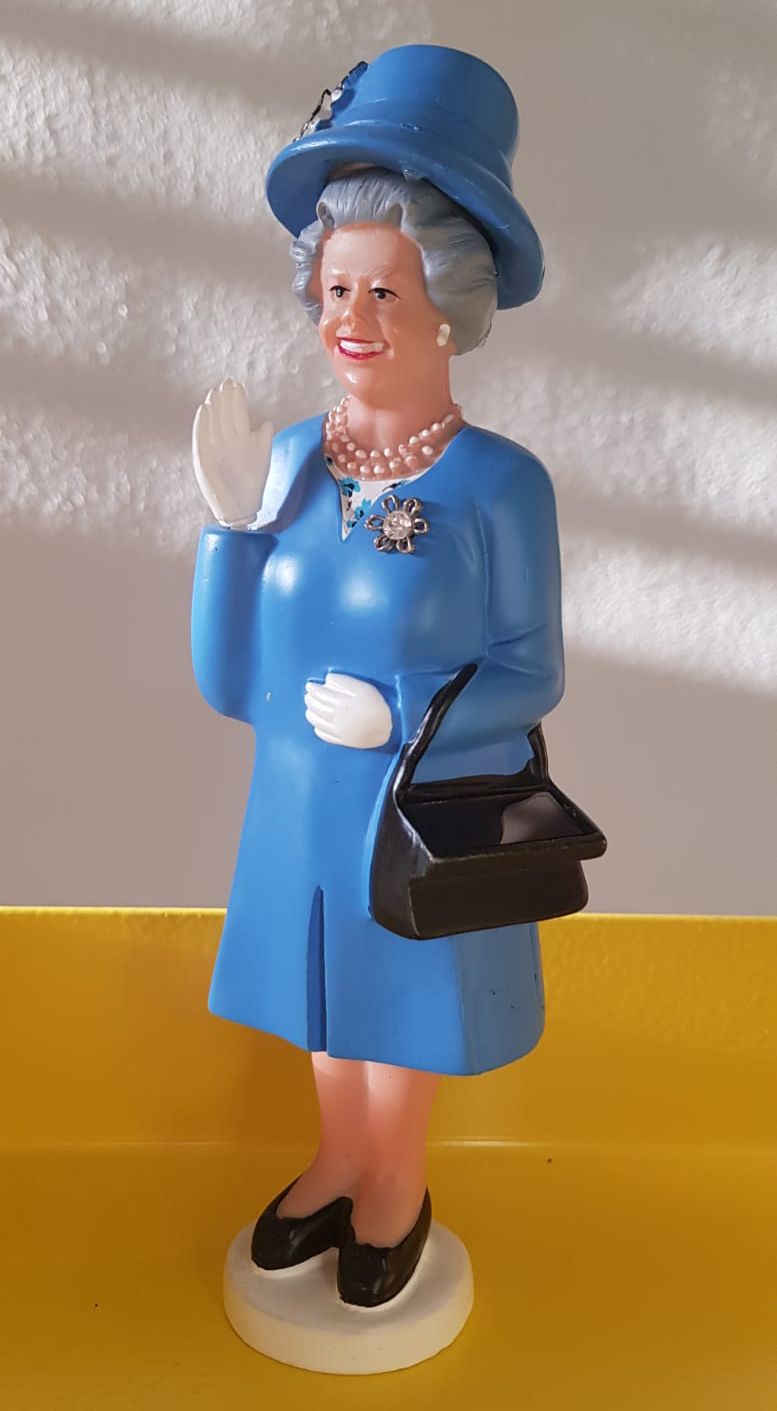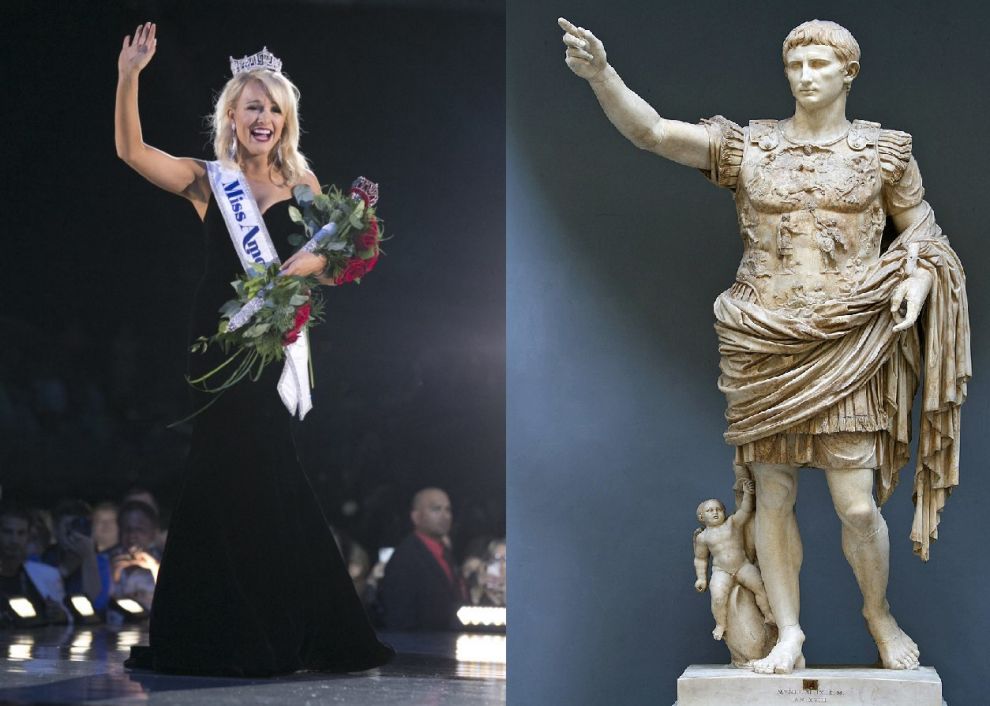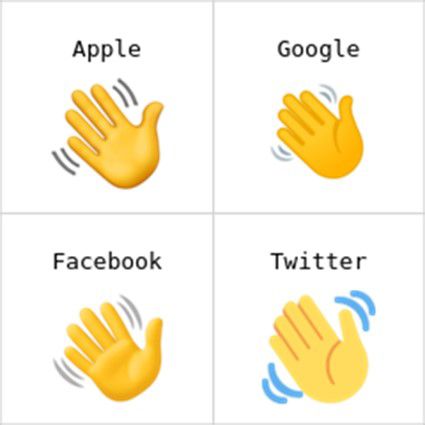Bezalel News
חדשות בצלאל
أخبار بتسلئيل
Waving Hello to the Queen. About the Lifted Hand Gesture - From Augustus Caesar to Miss America
A simple google search of the words "waving queen" yields a variety of incredibly similar images. The Queen, is of course Her Majesty, Queen Elisabeth II. No other queen comes up in the search results. Over the monochromatic outfit, the matching hat, the black handbag, the pearl necklace and the lapel pin, the gloved right hand dominates, waving to the crowds whoever and wherever they may be. Solar energized, plastic figurines of the queen, featuring her in this famous gesture, are sold (and will surely be sold in the future) in the multitude. A little bit of sun (a rather rare commodity in the homeland of the belated queen), or a desk lamp, and the hand goes into action. Camila, Kate, Meghan and even little Charlotte, often wave their hands as well and yet, Queen Elisabeth’s waving became her trademark. Since she passed away, the web is flooded with clips dedicated to seventy years of waving.
So, what is it about this gesture that’s so indicative (earning it the term ‘Royal Wave’) and at the same time so widespread? The history is long, complex and not necessarily conclusive. In any case one must consider the two methods of saying hello, Saluting and Waving and the complex relation between them. Augustus, the first Roman emperor (63 BC – 14 AD), is engraved in the world's collective memory thanks to his statue, known as ‘Augustus from Prima Porta’ (first century AD). The statue displays him barefoot, wearing war armor and with a determined gaze, his right hand held up in the air and his index finger pointing. The different meanings of this gesture are varied and intertwined: authority, absolute power under divine protection, giving a message to the military forces, addressing the welcoming crowds at ceremonial arrivals in cities throughout the empire, and expressing approval. In broad terms we can discuss the different senses of blessing and instruction in their different forms (instruction in the sense of teaching and instruction in the sense of commanding). The origin of this gesture is in Etruscan representations of The Orator. But mainly it is known for its frequent use by leaders throughout the ages, whenever appearing before a nation, aiming to establish themselves as rulers with great power and unquestionable legitimacy. At times referring directly to the Roman Empire. Remember Mussolini? As far as the gesture of waving hello (or saying goodbye) is concerned, its origin lies in the 18th century but it clearly goes back to the military salute and the above- stated Roman custom. Throughout the years the gesture appeared in different variations regarding the position of the arm, (straight or bent, held up or parallel to the ground), the wrist, (straight or moving), the palm itself, (facing inward or outward) and the fingers (bent or raised). Accordingly sending out a variety of messages that range from domination to affection and from aggression to elegance.
In this context it’s enough to mention the Nazi's saluting gesture of the raised hand, on the one hand, and the waves of elegant beauty pageant queens on the other. Some are war-mongers and some seek to achieve world peace.
And in the meanwhile, you can watch countless videos explaining How to Wave like Royalty or like Miss America. See, for example:
Royal Wave: How Do the Royals Do It?
Beauty Tips From Miss USA: How to Wave, Walk and Work It!
And of course, we mustn't forget the Waving Hand Emoji. Whatever the version, these are perfect examples of non-verbal gestures and visual communication that range between the sensory and the perceptual - between what draws an intuitive response and what requires a knowledge of cultural conventions.
Dr. Naomi Meiri-Dan
Lecturer in the Department of Visual and Material Culture












